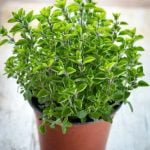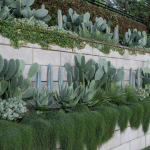Beadboard has been a popular choice in home design for decades, offering a charming and versatile way to enhance walls, ceilings, and furniture. In this article, we will explore the many creative ways that beadboard can be used to elevate your home décor and renovation projects.
Whether you are drawn to traditional, farmhouse, coastal, or modern design styles, beadboard can add a touch of timeless elegance to any space. From DIY projects to expert tips on maintenance and cleaning, we will cover everything you need to know to incorporate beadboard into your home with style and ease.
The history of beadboard dates back to the 1800s when it was first used as an affordable and durable wall covering in homes. Over time, its popularity has only grown, thanks to its classic look and practical benefits. As we delve into the pros and cons of using beadboard in home design, you will gain valuable insights into whether it is the right choice for your own decorating and renovation projects.
Looking for inspiration? We’ll also share real-life before-and-after stories from Better Homes and Gardens readers who have transformed their spaces with the help of beadboard. Whether you are a seasoned DIY enthusiast or new to the world of home improvement, there’s no doubt that beadboard offers endless possibilities for creating a beautiful and inviting living environment.
Pros and Cons of Using Beadboard in Home Decor and Renovation Projects
Beadboard has been a popular choice for home decor and renovation projects for many years. This classic design element adds texture and visual interest to walls, ceilings, and furniture, making it a versatile option for homeowners looking to add charm and character to their living spaces. However, like any design choice, there are both pros and cons to consider when incorporating beadboard into your home.
One of the main advantages of using beadboard in home decor is its timeless appeal. Whether you prefer a traditional, farmhouse, coastal, or modern design style, beadboard can complement a wide range of aesthetics. Its ability to add depth and dimension to a room is unmatched, making it a favorite among interior designers and DIY enthusiasts alike. Additionally, beadboard is relatively easy to install and can be painted or stained to suit your color preferences.
On the flip side, there are some drawbacks to using beadboard in home decor and renovation projects. One common concern is maintenance – while beadboard can be durable when properly cared for, it may require more upkeep than other wall materials.
It can also be prone to water damage in moisture-prone areas such as bathrooms or kitchens. Another potential downside is cost – depending on the quality of the materials used and the scope of the project, incorporating beadboard into your home decor can become pricey.
Despite these potential drawbacks, many homeowners find that the benefits of using beadboard in their homes far outweigh any drawbacks. With proper care and consideration during installation, beadboard can be a beautiful and practical addition to any living space.
Whether you’re considering adding beadboard to your walls or updating furniture with this classic design element, the versatility of beadboard offers endless possibilities for creating a cozy and inviting home environment. For even more inspiration on how to incorporate beadboard into your home decor projects visit Better Homes & Gardens today.
Creative Beadboard Ideas for Enhancing Walls, Ceilings, and Furniture
Beadboard has long been a popular choice for homeowners looking to add texture and interest to their walls, ceilings, and even furniture. With its timeless appeal and versatility, beadboard can be incorporated into any design style, from traditional to farmhouse to modern. In this section, we will explore some creative beadboard ideas for enhancing different areas of the home.
Walls
One of the most common uses for beadboard is as a wall treatment. Whether you choose to cover an entire wall or just use it as wainscoting, beadboard adds a charming and classic touch to any room. Consider using beadboard in the bathroom for a cottage-inspired look, or in the kitchen to create a cozy and inviting atmosphere. You can also experiment with different paint colors or finishes to achieve the perfect look for your space.
Ceilings
If you’re looking to add architectural interest to a room, consider installing beadboard on the ceiling. This can help draw the eye upward and make the space feel larger and more open. Beadboard ceilings work especially well in rooms with a coastal or farmhouse design aesthetic, but they can also add character to more modern spaces when paired with contemporary furnishings.
Furniture
For those who want to take their love of beadboard beyond walls and ceilings, incorporating it into furniture pieces is a great way to add texture and personality. Consider adding beadboard panels to the sides of a kitchen island or updating an old dresser with beadboard drawer fronts. You can also create custom headboards or bed frames using beadboard for a truly unique touch in bedrooms.
By considering these creative ideas for incorporating beadboard into your home decor projects, you can truly make your living spaces stand out while reflecting your personal tastes for style all guided by Better Homes & Gardens’influential insight on needboards ideas.
How to Incorporate Beadboard Into Different Design Styles
Beadboard has been a popular choice for adding texture and charm to homes for centuries. Its timeless appeal and versatility make it a great option for incorporating into different design styles, from traditional to modern. When it comes to traditional design, beadboard can be used in various ways to evoke a sense of classic elegance. For example, in traditional spaces, beadboard wainscoting can be installed on lower portions of walls to add architectural interest and create a warm, inviting atmosphere.
In farmhouse design, beadboard is often utilized to achieve a cozy, rustic look. Whether it’s used on walls, ceilings, or furniture pieces, beadboard can help create the charming and relaxed feel that farmhouse style is known for. Beadboard also works well in coastal design, where it can bring a nautical or beachy vibe to any space. Whether it’s painted in crisp white or soft pastel colors, beadboard can instantly evoke the feeling of being by the sea.
For those who prefer a more modern aesthetic, beadboard can still be incorporated in subtle yet impactful ways. In modern design, using beadboard sparingly or in unexpected applications can create an interesting contrast and add depth to the overall look of the space. Whether it’s used as an accent wall or as part of a built-in feature, beadboard adds character without compromising the clean lines and minimalist approach that define modern interiors.
Overall, no matter what your preferred design style may be, there are countless creative ways to incorporate beadboard into your home decor to achieve the perfect look and feel that suits your personal taste and lifestyle. Better Homes and Gardens offers endless inspiration for integrating beadboard into your home in ways that celebrate its history while keeping up with contemporary trends.
DIY Beadboard Projects for Home Improvement Enthusiasts
Beadboard is a versatile and timeless material that can be used in a variety of DIY home improvement projects. Whether you’re a seasoned DIY-er or just starting out, there are endless possibilities for incorporating beadboard into your home decor. From walls to furniture, beadboard can add charm and character to any room in your home.
Creating a Beadboard Accent Wall
An accent wall can instantly transform the look and feel of a room, and beadboard is an excellent choice for creating a focal point in any space. Consider installing beadboard on one wall in a bedroom, living room, or dining area to add texture and visual interest. You can paint the beadboard in a classic white for a traditional look, or experiment with bold colors for a more modern aesthetic.
Updating Cabinet Doors With Beadboard Inserts
If you’re looking to give your kitchen or bathroom cabinets a fresh new look, consider adding beadboard inserts to the door panels. This simple DIY project can instantly elevate the style of your cabinets and give them a custom-built appearance. Whether you choose to paint or stain the beadboard inserts, they will add charm and personality to your cabinetry.
Building Custom Furniture Pieces With Beadboard
For those with woodworking skills, incorporating beadboard into custom furniture pieces can take your DIY projects to the next level. Consider using beadboard as paneling for bookshelves, headboards, or even kitchen islands to create unique and personalized furniture pieces that are sure to make a statement in any room.
By exploring these DIY beadboard projects, home improvement enthusiasts can unleash their creativity and enhance their living spaces with the timeless charm of this classic material. With some creativity and elbow grease, the possibilities are endless for using beadboard to add character and style to any home. Better Homes and Gardens offers readers plenty of inspiring ideas for incorporating beadboard into their DIY home improvement projects.
Best Paint and Stain Options for Beadboard
Beadboard is a classic and versatile material that can be used to enhance the look of walls, ceilings, and furniture in any home. When it comes to choosing the best paint and stain options for beadboard, it’s important to consider the overall design aesthetic you’re trying to achieve. Whether you want to create a sleek modern look or a rustic farmhouse feel, the right finish can make all the difference.
When painting beadboard, there are a few options to consider. Latex paint is a popular choice for its durability and easy clean-up, while oil-based paint provides a more durable finish and is ideal for high-traffic areas. If you want to preserve the natural beauty of the wood, consider using a clear sealant or stain to enhance the grain and color of the beadboard.
To achieve the perfect finish on your beadboard, follow these tips:
- Properly prepare the surface by sanding and priming the beadboard before applying any paint or stain.
- Use high-quality brushes or rollers to ensure smooth and even coverage.
- Consider using a sprayer for larger projects to achieve a professional-looking finish.
- Allow each coat of paint or stain to dry completely before applying additional coats.
By carefully selecting the right paint or stain option for your beadboard project and following these tips for achieving the perfect finish, you can elevate the look of your home while maintaining its timeless appeal. Whether you’re updating existing beadboard features or incorporating it into a new design scheme, taking these factors into account will ensure beautiful results that enhance your living space.
Expert Tips for Maintaining and Cleaning Beadboard Surfaces
Beadboard surfaces can add a touch of timeless charm and character to any home, but it’s important to know how to properly maintain and clean this type of paneling to keep it looking its best for years to come. Here are some expert tips for maintaining and cleaning beadboard surfaces:
1. Regular Dusting: Use a soft, dry cloth or a duster to regularly remove dust and dirt from the surface of the beadboard. This will help prevent buildup and keep the panels looking fresh and clean.
2. Gentle Cleaning Solution: When it’s time for a deeper clean, use a gentle cleaning solution made from warm water and mild dish soap. Avoid using harsh chemicals or abrasive cleaners, as these can damage the finish of the beadboard.
3. Careful Drying: After cleaning the beadboard, be sure to thoroughly dry the surface with a clean, dry cloth to prevent any moisture from seeping into the panels.
4. Sealant Application: Consider applying a sealant or topcoat to your beadboard surfaces to help protect them from moisture, stains, and everyday wear and tear. Be sure to choose a product that is suitable for use on wood surfaces.
5. Avoid Excessive Moisture: Beadboard is susceptible to damage from excessive moisture, so be mindful of where you install it in your home. Avoid using beadboard in areas with high humidity or where it may come into contact with water frequently.
By following these expert tips for maintaining and cleaning beadboard surfaces, you can ensure that your paneling retains its beautiful appearance and adds lasting value to your home. Whether you have beadboard wainscoting, ceiling treatments, or furniture pieces, proper care will help them stand the test of time while adding charm to your space.
Real-Life Before and After Beadboard Transformations
In conclusion, beadboard has become a popular choice for home decor and renovation projects due to its versatility and timeless appeal. Homeowners can explore creative ideas for enhancing walls, ceilings, and furniture with beadboard to add character and charm to their living spaces. Whether it’s incorporating beadboard into different design styles or taking on DIY projects, there are endless possibilities for using this classic material in home improvement.
For those considering beadboard for their own homes, it’s important to weigh the pros and cons of using this material. While it can add texture and visual interest to a room, it also requires proper maintenance and cleaning to keep it looking its best. Fortunately, Better Homes and Gardens readers have shared inspiring before and after beadboard transformations that showcase the beauty of this material when incorporated into their homes.
When it comes to paint and stain options for beadboard, homeowners should consider the best finishes that will complement their overall design aesthetic. From traditional to coastal styles, there are various ways to achieve the perfect look with beadboard. With expert tips from Better Homes & Gardens and real-life examples from readers, anyone can turn their home into a beautiful space with the help of beadboard ideas.
Frequently Asked Questions
Is Beadboard Still in Style?
Beadboard is still in style and continues to be a popular choice for adding texture and visual interest to walls, ceilings, and even furniture. Its timeless appeal makes it a versatile option for various design styles.
How Do You Make Beadboard Look Modern?
To make beadboard look modern, consider using it in unexpected ways such as on kitchen islands, bathroom vanities, or as an accent wall. Pair it with sleek, minimalist furnishings and modern accessories to create a fresh and contemporary look.
What Style Does Beadboard Go With?
Beadboard complements a range of design styles including farmhouse, coastal, cottage, traditional, and even Scandinavian. It adds character and charm to spaces while also providing a sense of warmth and coziness. Its ability to blend with different aesthetics makes it a versatile choice for many interiors.

Welcome to my gardening blog! I am passionate about plants and enjoy sharing my knowledge and experiences with others. In this blog, I will write about everything related to gardening, from tips on how to get started to updates on my own garden projects.





